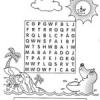
The emergence of non-alcoholic beer brought some relief to people who wanted to socialize, but, for some reason, couldn't get drunk. It was a lifeline for brewers who are round-the-clock drivers, are taking medication or want to refresh themselves during work hours.
However, everything that is good also has its bad side. This is what a new study from Cornell University has proven. Scientists have discovered that, under certain conditions, non-alcoholic beer can be a kind of incubator for many bacteria that are harmful to our health, such as E.coli and the salmonella.
see more
5 teas to flatten your belly and reduce swelling quickly before summer 2024
THIS food is capable of boosting and improving function…
You don't get drunk, but you can get very sick. What a situation, right?
The research compared results in non-alcoholic beers and with low alcohol content – approximately less than 2.5% alcohol by volume. And the completely alcohol-free drink was the most fertile ground for
According to the Cornell University study, when non-alcoholic beer is at a temperature of 4ºC – that is, super cold – it may even have some bacteria, but it is safe.
However, when the temperature rises to 14ºC, these little “naughties” begin to proliferate.
Scientists have advised that ideally this type of beer should be processed by pasteurization. They also recommended that sterile filtration and the addition of preservatives can reduce the risk of bacterial growth.
Furthermore, the storage of non-alcoholic beers deserves special attention. Mainly, according to the researchers, if the pH of the drink was higher than 4.20.
And, finally, they decided that specific analyzes would be carried out by breweries and that thermal processing would be more rigorous. Mainly because the consumption of this type of drink has increased and food safety must follow the public's habit.
Graduated in Social Communication from the Federal University of Goiás. Passionate about digital media, pop culture, technology, politics and psychoanalysis.


